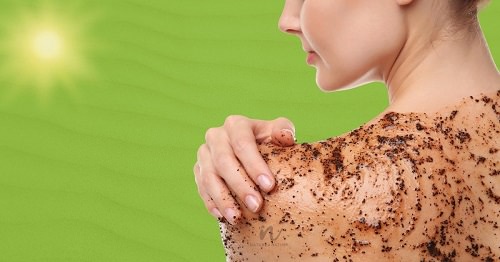Banishing Suntan: Effective Ways to Remove Forehead Discoloration! Learn how to get rid of suntan on the forehead with below tips and tricks!
Suntan refers to the darkening or browning of the skin due to exposure to the sun’s ultraviolet (UV) radiation. When the skin is exposed to sunlight, particularly to UVB rays, it triggers the production of melanin, a pigment responsible for giving color to the skin, hair, and eyes. Melanin acts as a natural defense mechanism to protect the skin from further damage due to UV radiation.
A suntan can vary in intensity and color, depending on factors such as the individual’s natural skin tone, the duration and intensity of sun exposure, and the level of melanin production. People with lighter skin tones tend to burn more easily and develop a red or pinkish sunburn before a tan develops. Individuals with darker skin tones have more melanin and may develop a deeper brown tan without experiencing significant sunburn.
The purpose of a suntan is to provide some level of protection to the skin from UV radiation. However, it’s important to note that excessive sun exposure and prolonged tanning can lead to harmful effects on the skin, including sunburn, premature aging, and an increased risk of skin cancer.
It’s best to practice safe sun exposure by using sunscreen, seeking shade during peak hours, and wearing protective clothing to minimize the risk of skin damage. Also note that while some people may desire a suntan for aesthetic reasons, prolonged and excessive exposure to the sun’s UV radiation can cause damage to the skin, including sunburn, premature aging, and an increased risk of skin cancer. It’s essential to protect your skin by using sunscreen, wearing protective clothing, and seeking shade when the sun is strongest.
How To Get Rid of Suntan On the Forehead
1. Lemon Juice
Lemon juice is a natural bleaching agent and can help lighten the skin. Squeeze fresh lemon juice and apply it to the tanned areas of your forehead. Leave it on for 10-15 minutes and then rinse off with lukewarm water. Repeat this process daily until you see results.
2. Aloe Vera
Aloe vera has soothing properties and can help lighten a suntan. Extract fresh aloe vera gel from the plant and apply it to your forehead. Leave it on for 20-30 minutes and then rinse off with water. Repeat this process regularly for effective results.
3. Potato Juice
Potatoes have natural bleaching properties and can help lighten a suntan. Grate a potato and extract the juice. Apply the juice to your forehead using a cotton ball or your fingers. Leave it on for 20-30 minutes and then wash it off with water. Repeat this process daily.
4. Cucumber
Cucumber has cooling and skin-lightening properties. Blend a cucumber to make a paste and apply it to your forehead. Leave it on for 20-30 minutes and then rinse off with water. Repeat this process regularly.
5. Exfoliation
Regular exfoliation helps remove dead skin cells and can help fade a suntan. Use a gentle scrub or a mixture of sugar and honey to exfoliate your forehead. Gently massage the scrub in circular motions for a few minutes and then rinse off with water. Do this once or twice a week.
6. Sunscreen
Prevention is key to avoiding further tanning. Apply broad-spectrum sunscreen with a high SPF to your forehead before going out in the sun. Reapply every few hours, especially if you’re sweating or swimming.
7. Protective Clothing
Wear a hat or cap that shades your forehead when you’re out in the sun. This will provide extra protection and help prevent further tanning.
Remember, the process of lightening a suntan takes time and consistency. Be patient and follow these remedies and preventive measures regularly for effective results. If you have any concerns or persistent skin issues, it’s always a good idea to consult with a dermatologist.
Is Suntan Safe?
While many people view a suntan as a desirable aesthetic, it’s important to be aware of the potential health risks associated with excessive sun exposure and suntanning.
- Sunburn: Overexposure to the sun’s UV radiation can cause sunburn. Redness, pain, swelling, and in severe cases, blistering of the skin are some characteristics of sunburn.
- Skin Damage: Prolonged and repeated exposure to UV radiation can lead to long-term skin damage. It can accelerate the aging process of the skin, causing wrinkles, fine lines, and age spots.
- Skin Cancer: Exposure to UV radiation is a major risk factor for skin cancer. It can damage the DNA in skin cells, leading to the development of malignant cells. There are different types of skin cancer, including basal cell carcinoma, squamous cell carcinoma, and melanoma, which is the most dangerous form.
- Eye Damage: UV radiation can harm the eyes as well. Prolonged exposure can increase the risk of cataracts, which cause clouding of the eye’s lens. It can also contribute to macular degeneration, a condition that affects the central vision.
- Weakened Immune System: Excessive sun exposure can suppress the immune system, making you more susceptible to infections and other health issues.
Suntan: The Major Actors
Suntan occurs as a result of exposure to the sun’s ultraviolet (UV) rays. When your skin is exposed to UV radiation, it produces melanin, a pigment that gives your skin color. The increase in melanin production is a natural defense mechanism of the skin to protect it from further damage caused by UV radiation. There are a few reasons why suntan occurs:
- UV Radiation: The primary cause of suntan is exposure to UV radiation from the sun. When your skin is exposed to the sun’s UVB rays, it triggers the production of melanin, resulting in a darkening of the skin.
- Skin Type: Different skin types react differently to UV radiation. People with lighter skin tones tend to burn more easily and are more prone to developing a suntan in comparison to darker skin tones.
- Time of Exposure: The longer you spend in the sun, the higher the chances of developing a suntan. Prolonged exposure without proper sun protection increases the intensity of UV radiation on the skin, leading to more melanin production and a deeper tan.
- The intensity of the Sun: The intensity of the sun’s rays varies depending on factors such as geographical location, altitude, and time of day. The sun’s rays are strongest between 10 a.m. and 4 p.m., so spending time outdoors during these hours increases the risk of getting a suntan.
- Reflection: Surfaces such as sand, water, snow, and concrete can reflect UV radiation, increasing exposure to the sun’s rays. This reflection can intensify the effects of UV radiation and lead to a quicker and darker suntan.
- Sunbeds and Tanning Lamps: Artificial sources of UV radiation, such as tanning beds and lamps, emit UVA and UVB rays. Using these devices without proper protection can result in a suntan.
Prevent Suntan: Effective Measures
To prevent suntan and protect your skin from the harmful effects of UV radiation, you can follow these preventive measures:
1. Use Sunscreen
Apply a broad-spectrum sunscreen with a high Sun Protection Factor (SPF) of 30 or higher to the sun-exposed skin. Make sure to apply it at least 15-30 minutes before going outside. Reapply every two hours, or more frequently if you’re sweating heavily or swimming.
2. Seek Shade
When the sun is at its strongest, typically between 10 a.m. and 4 p.m., seek shade as much as possible. This reduces your exposure to intense UV radiation.
3. Wear Protective Clothing
Cover up your skin with clothing that provides adequate sun protection. Choose lightweight, loose-fitting clothes that cover your arms, legs, and neck. Wearing a wide-brimmed hat and sunglasses with UV protection is also recommended.
4. Use Sun-Protective Accessories
Consider using a beach umbrella or canopy to create shade when you’re spending time outdoors. This provides additional protection from direct sunlight.
5. Limit Sun Exposure
Try to limit your time in the sun, especially during peak hours. If you’re participating in outdoor activities, plan them for early morning or late afternoon when the sun is less intense.
6. Be Cautious Around Reflective Surfaces
Remember that surfaces like water, sand, and snow can reflect UV radiation, increasing your exposure. Take extra precautions by wearing sunglasses, using sunscreen, and seeking shade when around these reflective surfaces.
7. Hydration
Drink plenty of water to keep your skin hydrated and healthy. Proper hydration can also help maintain the skin’s natural defenses.
8. Avoid Tanning Beds
Avoid using tanning beds or tanning lamps, as they emit UVA and UVB radiation, which can be harmful to your skin and increase the risk of skin cancer.
9. Perform Regular Skin Checks
Monitor your skin for any changes, such as new moles, growths, or irregularities. If you notice anything suspicious, consult a dermatologist for a professional evaluation.
Remember, prevention is key when it comes to protecting your skin from sun damage. By incorporating these preventive measures into your routine, you can reduce the risk of suntan and protect your skin’s health in the long term.






